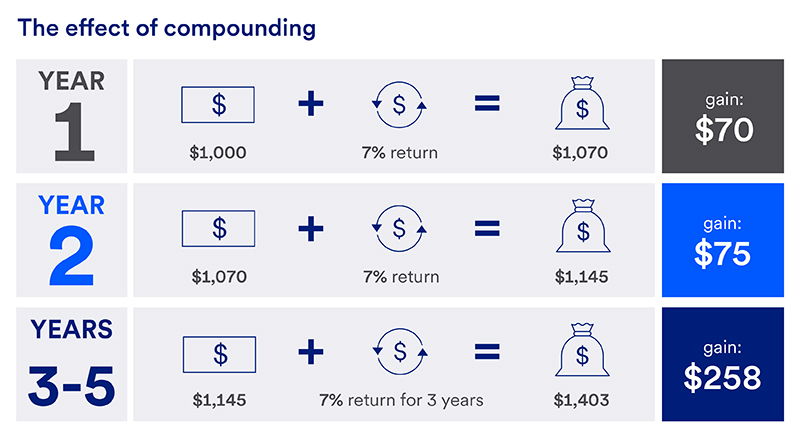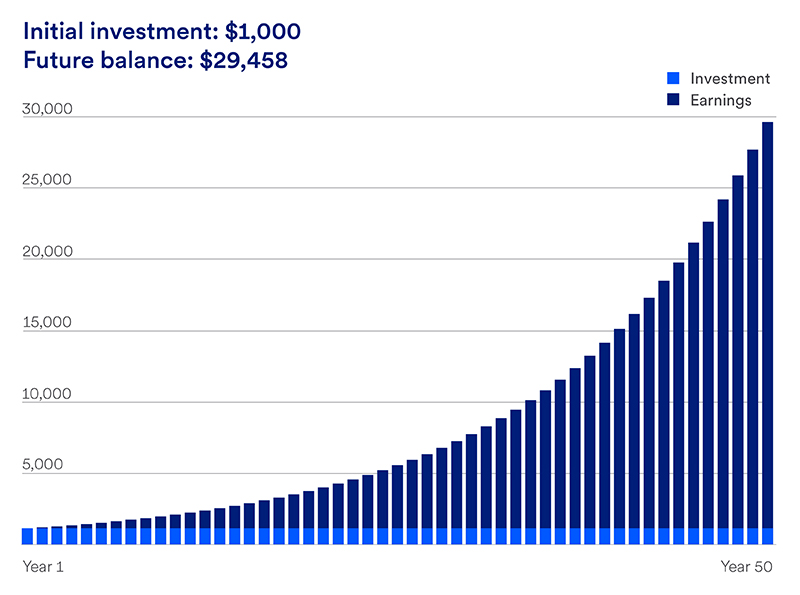How to calculate compound annual growth
There’s a formula you can use to calculate the compound growth rate of an investment, which is referred to as the compound annual growth rate, or CAGR. It requires three inputs: the investment’s end value, beginning value and the time period.
Here’s the formula:
- Divide an investment’s end value by its beginning value.
- Raise the result to an exponent of one divided by the number of years, and then subtract one from the result.
- Multiply this result by 100 to arrive at a percentage.
CAGR = [(End value/Beginning value)^(1/# of years)-1]x100 = % growth
How to take advantage of compound annual growth
The single biggest way to benefit from compounding is to start investing as early as possible. If you want to retire with a certain amount of money, the earlier you start, the less you would have to invest initially. You may even be able to set aside less as you age and put more money toward other goals. The longer your investments have to compound, the greater the impact.
Here’s another illustration (again, using a yearly return of 7% as an example – see graphic below): Imagine you’re planning to retire at 70. If you invested your first $1,000 at age 40 and held it for 30 years, you’d have just over $7,613. If you had started at age 20, you’d have more than $29,458 at age 70 — and that’s without ever adding another penny.
























